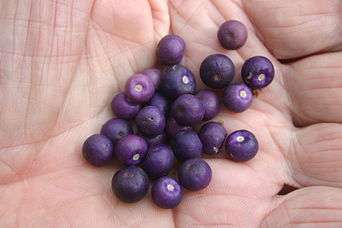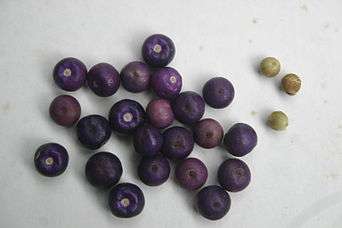Rapanea melanophloeos
Rapanea melanophloeos, commonly known as Cape beech, Kaapse boekenhout or isiCalabi, is a dense, graceful, evergreen tree that is native to the afromontane forests of Southern Africa. Outside forests they are also commonly encountered along stream banks and in gullies.
| Cape beech | |
|---|---|
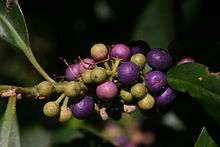 | |
| Scientific classification | |
| Kingdom: | Plantae |
| Clade: | Tracheophytes |
| Clade: | Angiosperms |
| Clade: | Eudicots |
| Clade: | Asterids |
| Order: | Ericales |
| Family: | Primulaceae |
| Genus: | Rapanea |
| Species: | R. melanophloeos |
| Binomial name | |
| Rapanea melanophloeos | |
Distribution
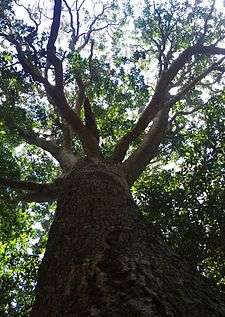
The natural range of this stately tree is from Cape Town in the south, to Zambia in the north. In the Eastern Cape it is sometimes found alongside its smaller coastal relative, Rapanea gilliana. Despite its common name it is not a close relative of the familiar Beech tree of the northern hemisphere, and it is actually more closely related to the Rhododendrons.
Description
Rapanea melanophloeos is a dense, graceful, evergreen tree. Its leaves, stalks and berries often have a purple or maroon color. This tree is usually dioecious (male and female flowers on different trees) and birds are attracted by its tiny, dark purple berries. The specific name 'melanophloeos' means 'black bark' and resulted from a mistaken identification of the source tree as Swartbas (Diospyros whyteana).
Cultivation
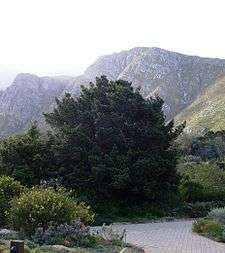
Rapanea melanophloeos is cultivated as an ornamental tree and screening shrub in gardens, and as a potted bonsai specimen. It is hardy and grows well in windy areas and near the coast. Once established, the plant is reasonably drought tolerant and has low maintenance needs.
The plant sends up suckers from its roots that eventually become new trees, and so is best not planted adjacent to paving.[1] Rapanea grows easily from seed.
Gallery
References
- "Rapanea melanophloeos | PlantZAfrica.com". www.plantzafrica.com. Retrieved 2017-08-04.
External links
| Wikimedia Commons has media related to Rapanea melanophloeos. |
